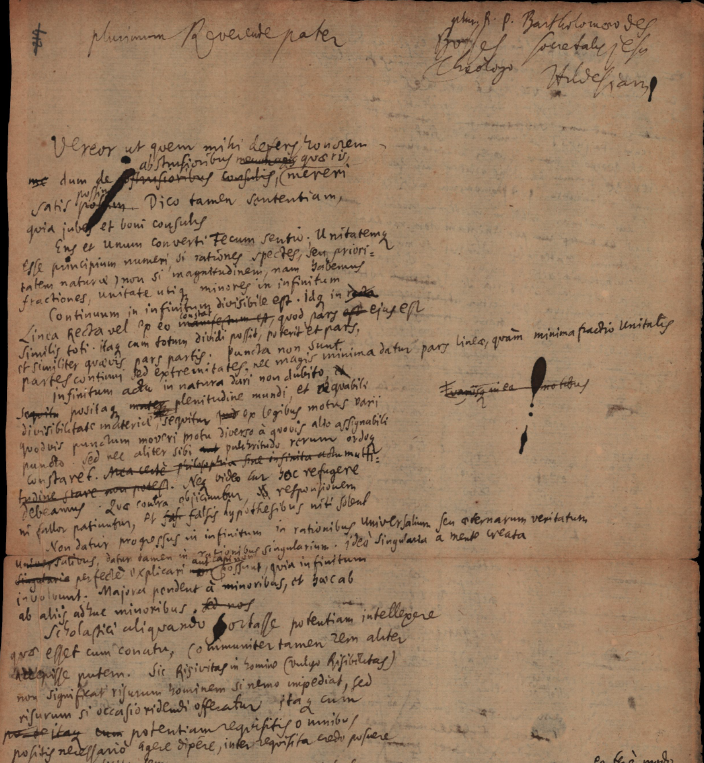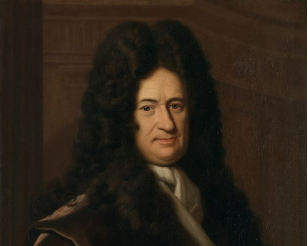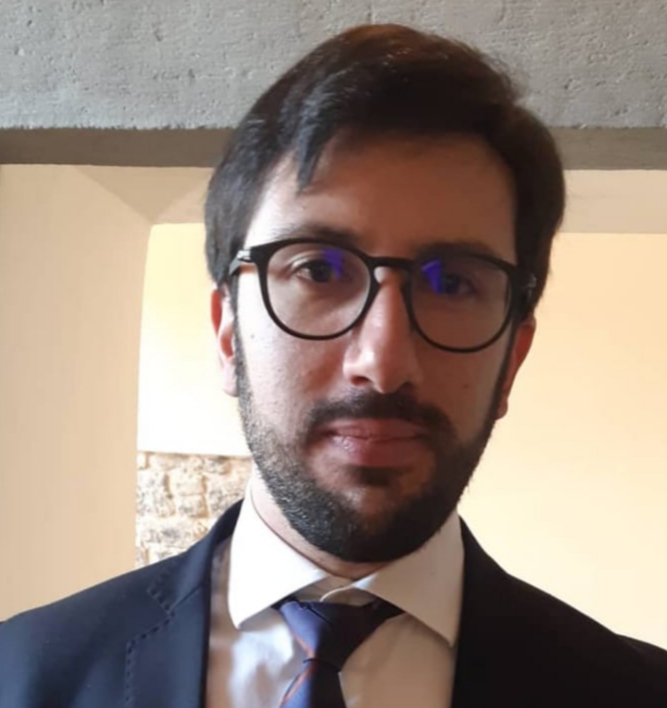
Leibniz’s Correspondence and Encounters
Leibniz’s Correspondence and Encounters

A | Correspondents
Sources:
Der Briefwechsel des Gottfried Wilhelm Leibniz in der Königlichen öffentlichen Bibliothek zu Hannover, Hannover 1889 (Reprint Hildesheim 1966).
http://www.gottfried-wilhelm-leibniz-gesellschaft.de/leibniz-digital-resources/4-briefwechsel.html
Legenda:
(mainly) mathematical
(mainly) philosophical
(mainly) natural philosophy/physics
- Alberti, Antonio (= Amable de Tourreil) (1689-94)
Leibniz became acquainted with Alberti, the Jansenist agent and confidant of Amauld and Landgrave Emst von Hessen-Rheinfels (whose real identity, Amable de Tourreil, Leibniz only learned from Quesnel in 1706) in the summer of 1689 during his stay in Rome.9 letters (6 from Alberti, 3 from Leibniz). Correspondence published in A.2.2.
- Antoine Arnauld (1671-1690), Jansenist theologian and philosopher
Correspondence entirely published in A 2.2
See R. Sleigh, Leibniz and Arnauld (1990); M. Bolton, Leibniz to Arnauld, in P. Lodge, Leibniz and His Correspondents, Ch. 5.
- Henri Basnage de Bauval (1692-1708), French Huguenot, editor of the journal Histoire des Ouvrages des Savans.
37 letters (22 Letters by Leibniz, and 15 letters by Basnage). Correspondence published in GP III. Letters until 1706 are published in A.2.2/3/4.
- Pierre Bayle (1698-1702)
11 letters (9 letters by Leibniz; 2 by Bayle). Published in A.2.3/4
- Jacob Bernoulli (1687-1705), Swiss mathematician
23 letters (10 letters by Leibniz, 13 letters by Bernoulli). Correspondence published in GM 3. Letters until 1697 are also in A.3.4/6/7 until 1697.
- Johann Bernoulli (1693-1716) *, Swiss mathematician (brother of Jacob)
Very long correspondence. Published in GM 3. Letters until 1701 are in A 3.6/7/8
Discussion on infinity in the years 1698-99, see Ariew-Garber pp. 167-70.
- Friedrich W. Bierling (1709-1716), theologian and historian, professor at the University of Rinteln.
The letters between Leibniz and Bierling are printed in Dut V, pp. 353-392. GP VII, pp. 482-511 gives only Leibniz’s letters.
- Jean Paul Bignon (1693-1715), President of the Paris Academy of Science.
53 letters (26 letters by Leibniz, 27 by Bignon)
A 1.9/22, letters until 1703.
- C. Bodenhausen (1689-1697), German mathematician based in Italy, discussed infinitesimal calculus and dynamics with Leibniz.
70 letters (34 letters by Leibniz, 36 by Bodenhausen)
Published in A.3. 4/7
- B. Bossuet (1679-1702), Bishop of Meaux, theologian and historian
8 letters (7 letters by Leibniz, 1 by Bossuet), published in A.1 2-7-10-18-20.
- Louis Bourguet (1706-1713), Swiss polymath (archaeology, geology, philosophy, biology).
The correspondence between Leibniz and Bourguet is partially published in GP III. Some letters are still unpublished.
- Bouvet (1697-1707), French Jesuit, missionary in China
12 letters (8 letters by Leibniz, 4 by Bouvet), edited in series A.1
See especially Leibniz’s letter of February 15, 1701, A I.19, N. 202
- Thomas Burnett of Kemney (1695-1714), Scottish gentleman, Leibniz’s source for the English philosophical and theological debates (esp. Locke)
86 letters (29 letters by Leibniz, 57 by Burnett)
Originally published in GP III, now in A.1 (until 1706)
See S. Duncan, “Toland and Locke in the Leibniz-Burnett Correspondence”, Locke Studies 17:117-141 (2017)
- Pierre de Carcavy, French mathematician and librarian
9 letters (4 letters by Leibniz, 5 letters by Carcavy). The correspondence is published in A.2.1>>(letter of June 22, 1671)
- Samuel Clarke (1715-6), British philosopher
Leibniz’s correspondence with Clarke is in GP VII
See E. Vailati, Leibniz and Clarke (1997)
- Detlev Clüver (1680-98), German mathematician,
Pasini, Studia Leibnitiana 26 (1):108-124
19 letters (8 letters by Leibniz, 11 letters by Clüver). Printed in A.3
- Pierre Coste (1706-13), French theologian and translator (see Locke)
14 letters (7 letters by Leibniz, 7 by Coste), the correspondence is published in GP III. Letters until 1707 are now edited in A.2.4
- Pierre Dangicourt (1705-16), French mathematician
3 letters (1 letter by Leibniz, 2 letters by Dangicourt). Dangicourt’s first letter is in A. 3.8 249. Leibniz’s letter to Dangicourt of 1716 is in Dut III.
- Barthélemy Des Bosses (from 1706 to 1716), Jesuit theologian and philosopher.
108 letters (41 letters by Leibniz, 67 by Des Bosses), published in GP II, partially published in A.2.4 (until 1706). See also The Leibniz-Des Bosses Correspondence, ed. by Look and Rutherford. Cf. also B. Look, “On Substance and Relations in Leibniz’s Correspondence with Des Bosses”, in Leibniz and His Correspondents, ed. Lodge, Chapter 11.
- Burchard De Volder (1698-1706)*, Dutch scientist, Cartesian philosopher
The correspondence is now fully published in A.2.3. and 2.4. See also The Leibniz-De Volder Correspondence by Lodge.
- Honoré Fabri (1677), Jesuit, scientist and philosopher (see Encounters)
1 letters by Leibniz, 1 by Fabri. These letters are in A.2. 1
- Michelangelo Fardella (1690-1714)* Italian Cartesian philosopher and scientist
130 letters (20 letters by Leibniz, 110 by Fardella). The correspondence is partially edited in A.2.2/3/4, until 1707.
See also Robinet, L’empire leibnizien. La conquite de la chaire de mathématiques de l’université de Padoue. Jakob Hermann et Nicolas Bernoulli (1707-1719), Trieste 1991; S. Femiano, Über den Briefwechsel zwischen Michelangelo Fardella und Leibniz, Studia Leibnitiana, Bd. 14, H. 2 (1982), pp. 153-183; D. Garber, Leibniz and Fardella: Body, Substance and Idealism, In Paul Lodge (ed.), Leibniz and His Correspondents.
- Bernard le Bovier de Fontenelle (1700-1704)*, Secretary of the Academy of Science in Paris
15 letters (9 letters by Leibniz, 6 letters by Fontenelle). The correspondence is now edited in A.2.4
- Simon Foucher (1676-95), canon of Dijon, philosopher
24 letters (9 letters by Leibniz, 15 letters by Foucher). The correspondence is published in A.2.1/2/3
See also S. Brown, “The Leibniz-Foucher Alliance”, in Lodge (ed.), Leibniz and His Correspondents, Chapter 4.
- Jean Gallois (1672-92), secretary of the Academy of Sciences in Paris
11 letters (9 letters by Leibniz, 2 letters by Gallois). The correspondence is published in A.3.1-5 and A.2.1
See especially Accessio ad arithmeticam infinitorum (1672).
- Guido Grandi (1703-14), Italian mathematician, professor in Pisa
11 letters (6 letters by Leibniz, 5 by Grandi). Published in GM IV.
- Domenico Guglielmini (1690-1709), Italian physician and mathematician, Bologna
11 letters (4 letters by Leibniz, 7 by Guglielmini), partially edited in A. 3. 4-7, until 1697.
- Michael Gottlieb Hansch (1706-16), theologian and philosopher
38 letters by Hansch, 10 by Leibniz in Hanover, but other letters are preserved elsewhere, and others seem to be lost. Letters until 1707 are now edited in A.2.4
- Nicolas Hartsoeker (1706-12)*
31 letters (13 letters by Leibniz, 18 by Hartsoeker). Published in GP III.
See G. Mormino, “Teorie della coesione nell’epistolario Leibniz-Hartsoeker”, Rivista di storia della filosofia 71, 4, 2016.
- M. van Helmont (?-1699), Flemish alchemist and writer
Very short correspondence between Leibniz and Helmont (edited in A.2). Leibniz mainly discusses his views in the correspondence with Electress Sophie. Cf. the correspondence with Sophie
- Jakob Hermann (1704-16), Swiss mathematician, professor in Padua, then in Frankfurt
The correspondence is partially published in GM 4.
See also A. Robinet, L’empire leibnizien. La conquite de la chaire de mathématiques de l’université de Padoue. Jakob Hermann et Nicolas Bernoulli (1707-1719), Trieste 1991.
- F. L’Hospital (1692-1701)*, French mathematician, author of L’Analyse des Infiniment Petits (1696),member of the circle of Malebranche in Paris.
25 letters by Leibniz, 21 by L’Hospital. The correspondence is published in A.3.5-8
- Huygens (1679-95)*
32 letters by Leibniz, 26 by Huygens. The correspondence is now edited in A.3.1-6
- Isaac Jaquelot (1702-1704), French Huguenot minister and theologian, ended his life in Berlin, where he met Leibniz in 1702
10 letters by Leibniz, 12 by Jaquelot. The correspondence is edited in A.2.4
- Adamus A. Kochanski (1670-98), Polish mathematician
15 letters by Leibniz, 24 by Kochanski. The correspondence is edited in A.2.1, A.1.7, A.2.2, A.1.8-15.
- Anton Leeuwenhoek (1715), famous Dutch microscopist. See also Encounters (Leibniz met him already in 1676)
Short correspondence between Leibniz and Leeuwenhoek in 1715-6 (Leibniz’s letters where published in 1718 in https://lensonleeuwenhoek.net/content/send-brieven )
- Jaques Le Long or Lelong (1704-16), French bibliographer and librarian
15 letters by Leibniz, 47 by Lelong. Letters edited in 1.23-26 until 1706.
- Antonio Magliabechi (1689-1711), Italian librarian
26 letters by Leibniz, 76 by Magliabechi. Letters are edited in A.1.5-24 until 1704.
- Nicholas Malebranche (the exchange takes place from 1679 to 1711).
10 letters by Leibniz, 7 by Malebranche. Edited in GP I, now also in A.2.1/2/3 until 1699.
For all the letters and texts about Malebranche: Cf. Robinet, Malebranche et Leibniz. Relations personelles, 1955.
- Damaris Lady Masham (1703-4) >> Cudworth, Locke
6 letters by Leibniz, 5 by Masham. The correspondence is now edited in A.2.4
See P. Phemister, “The Principle of Uniformity in the Correspondence between Leibniz and Lady Masham”, in Lodge (ed.), Leibniz and His Correspondents, Chapter 9.
- Gerhard Meier (1690-1702) German theologian and pedagogist
28 letters by Leibniz, 100 by Meier. The whole correspondence is in A.1. 6-21, but the philosophically relevant letters are also in A.2.2.
- Otto Mencke (1681-1706), German philosopher and scientist, editor of the Acta eruditorum
18 letters by Leibniz, 139 by Mencke. The correspondence is edited in A.1. 3-26
- André Morell (1694-1703), Swiss numismatic, antiquarian, interested in J. Bohme
15 letters by Leibniz, 40 letters by Morell. The whole correspondence is edited in A.1. 10-22.
- Newton, see also Encounters.
Leibniz to Newton, 17-03-1693 (A.3.5 N. 139); Newton to Leibniz, 26-10-1693 (A.3.5 N. 194)
Cf. D. Bertoloni Meli, Equivalence and Priority. Newton vs. Leibniz, 1993.
- Henry Oldenburg (1670-77) German theologian and scientist, secretary of the Royal Society
5 letters by Leibniz, 25 letters by Oldenburg. The correspondence is edited in A.2.1, A.3.1 and 3.2.
P. Beeley, “Leibniz’s Correspondence with Oldenburg”, in Lodge (ed.), Leibniz and His Correspondents, Chap. 3.
- T. Overbeck (1705-1716) Cf. Fichant, Apokatastasis 1991. Leibniz discussed with him about combinatorics and dyadic, and the question of the eternal recurrence
25 letters by Leibniz, 21 letters by Overbeck, mainly unpublished
- Papin (1692-1700), French physicist and mathematician, professor of mathematics in Marburg. He had a long discussion with Leibniz on dynamics
55 letters by Leibniz, 77 letters by Papin. The correspondence has been published in A.3.5-8.
See A. G. Ranea, “The a priori Method and the actio Concept Revised. Dynamics and Metaphysics in a unpublished controversy between Leibniz and Denis Papin”, Studia Leibnitiana, 21, 1, 1989.
- Placcius (1676-1699), German jurist and polymath
22 letters by Leibniz, 33 letters by Placcius. Correspondence edited in A.2.1/2/3
- Remond (1713-1716), counsellor of the Duke of Orléans
14 letters by Leibniz, 13 letters by Remond. Edited in GP III.
- A. Schmidt (1694-1716), German theologian
34 letters by Leibniz, 136 letters by Schmidt. The correspondence is edited in A.1.10-26, until 1706.
- Johann Christian Schulenburg (1698-1701) rector of the University of Bremen
1 letter by Leibniz, 5 letters by Schulenburg. The correspondence is edited in A.2.3 and 2.4
- Hans Sloane (1700-1711), Irish physician, Secretary and then President of the Royal Society (https://en.wikipedia.org/wiki/Hans_Sloane)
7 letters by Leibniz, 8 letters by Sloane. Until 1701, this correspondence is published in A. 3. 8.
- Thomas Smith (1693-1710), English scholar
11 letters by Leibniz, 14 letters by Smith. Until 1706 the correspondence is edited in A.1.10-26.
- Sophie + Sophie Charlotte (1691-1714) see the letters edited and translated in Strickland, Leibniz and the Two Sophies.
- Georg E. Stahl 1709-11 see The Leibniz-Stahl Correspondence
- Johann C. Sturm (1694-98)* German philosopher
2 letters by Leibniz, 3 letters by Sturm (plus the materials concerning De ipsa natura). This correspondence is published in A.2.2. and 2.3.
A. Sangiacomo, Johann Christoph Sturm’s Natural Philosophy: Passive Forms, Occasionalism, and Scientific Explanations, Journal of the History of Philosophy, 58, 3, 2020.
- Jakob Thomasius , German philosopher, Leibniz’s teacher in Leipzig
Correspondence edited in GP 1, then in A.2.1, and and Bodeus, Correspondence Leibniz-Thomasius 1663-72
- John Toland (1708-10), Irish philosopher
Many aspects of Toland’s philosophy are discussed by Leibniz in the correspondence with Sophie Charlotte (See Leibniz and the Two Sophies).
4 letters by Leibniz, 4 letters by Toland. Edited in: G. Carabelli, John Toland e G. W. Leibniz: otto lettere, «Rivista critica di storia della filosofia», 29 (1974), 4, pp. 412-31.
See also M. R. Antognazza, “Natural and Supernatural Mysteries: Leibniz’s “Annotatiunculae subitaneae” on Toland’s “Christianity not Mysterious”, in W. Schröder (hrsg.), Gestalten des Deismus in Europa: Günter Gawlick zum 80. Geburtstag, Wiesbaden: Harrassowitz 2013, pp. 29-40.
- Giovanni Battista Tolomei (1693-1705), Italian Jesuit priest, theologian and cardinal
7 letters by Leibniz, 4 letters by Tolomei. The Correspondence until 1707 is edited in A. 2.2. and 2.4
- W. von Thschirnhaus (1677-1713)*, German mathematician and philosopher
20 letters by Leibniz, 30 letters by Tschirnhaus. Correspondence edited by Gerhardt in GM 4, now published in A. 6.3, A. 3.2.8 until 1701.
- Augustin Vagetius (1692-98), professor of philosophy in Göttingen
9 letters by Leibniz, 27 letters by Vagetius. The correspondence is edited in A.3.5-7 and A.2.2.
- Pierre Varignon (1701-1716), French mathematician
13 letters by Leibniz, 24 letters by Varignon. The correspondence is in GM IV
- Vincenzo Viviani (1703), Italian mathematician, disciple of Galileo and Torricelli
Only 1 letter by Leibniz
- Gabriel Wagner (1696-1708), German radical philosopher
13 letters by Leibniz, 19 letters by Wagner. The correspondence going from 1696 to 1704 has been published in A.2.3 and A.2.4. The last part of the correspondence should be published in A.2.5.
- Ch. Wagner (1697-1716), professor of mathematics and physics at the University of Helmstedt, he had worked as Leibniz’s secretary between 1697 and 1699. He also worked with Leibniz to the construction of a model of the calculating machine
Part of the correspondence is in Hanover, another part is conserved in Halle. Letters until 1701 have been published in A 3.7-8
- John Wallis (1696-1700), British mathematician
10 letters by Leibniz, 12 letters by Wallis. The correspondence is published in GM IV, and now in A.3.7-8. [add reference to P. Beeley’s edition, also to the Oxford site]
- Erhard Weigel (1679-97), German mathematician, astronomer, and philosopher, former professor of Leibniz in Jena
The correspondence is edited in A.2.1 and 2.2, A.3.2, 3.4-7.
- Christian Wolff (1704-16),* German philosopher and mathematician
41 letters by Leibniz, 78 letters by Wolff. The correspondence has been partially edited by Gerhardt, Briefwechsel Zwischen Leibniz Und Christian Wolff.
See also D. Rutherford, “Idealism Declined. Leibnzi and Christian Wolff”, in Lodge (ed.) Leibniz and His Correspondents, Chap. 10.
B | Encounters
Calculatores (Medieval philosophers)
- Bonaventura Cavalieri
- Cordemoy
- Descartes
- Kenelm Digby
- Pierre de Fermat
- Honoré Fabri
- Libertus Fromondus
- Gassendi
- Galileo
- Gregory of st. Vincent
- Thomas Hobbes
- Kepler
- Joachim Jungius (+ Jungius’ scholars as correspondents)
- John Locke
- Newton
- Blaise Pascal
- Spinoza
- John Toland (also correspondent)
- Evangelista Torricelli
⇐ BACK
-

Dr. Osvaldo Ottaviani
Translation
